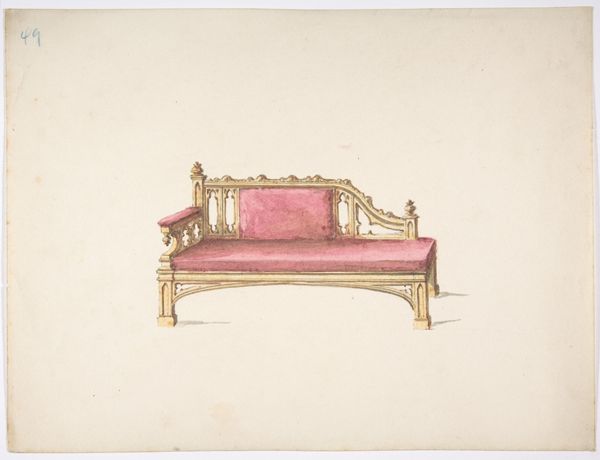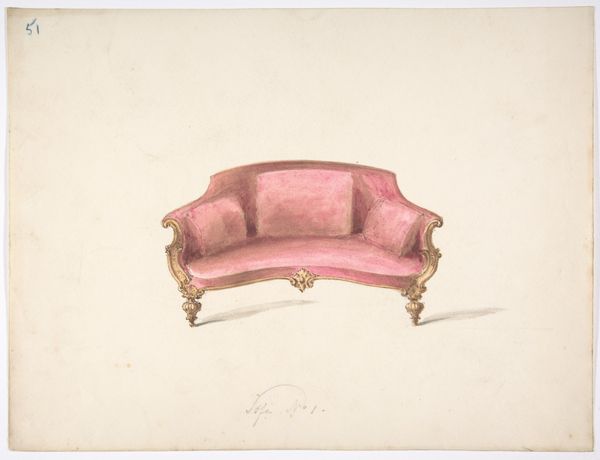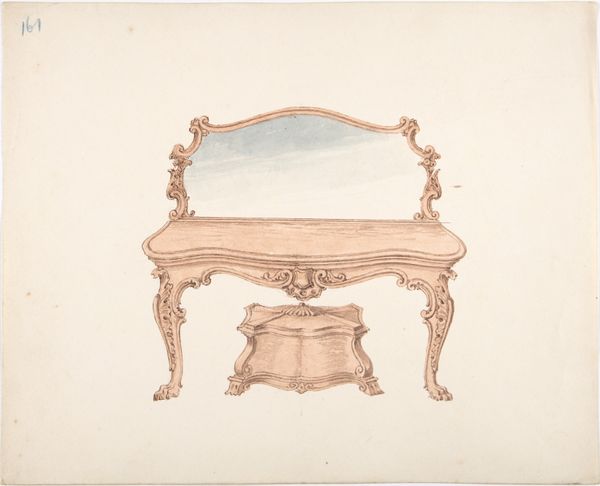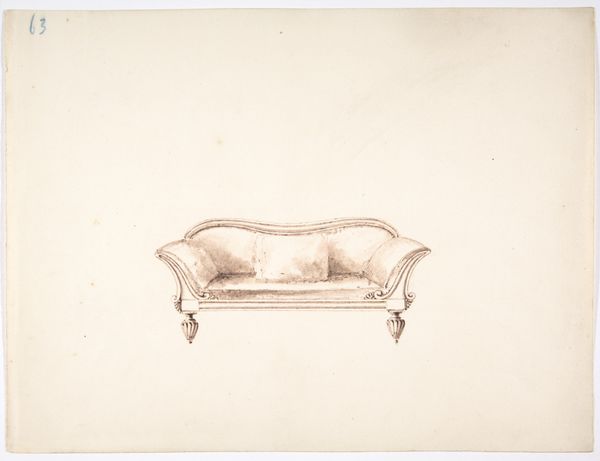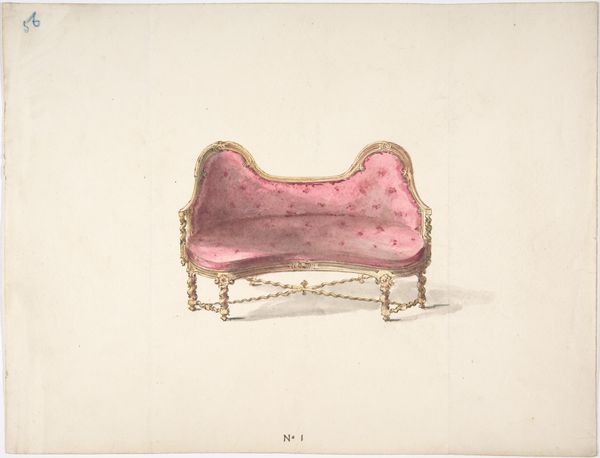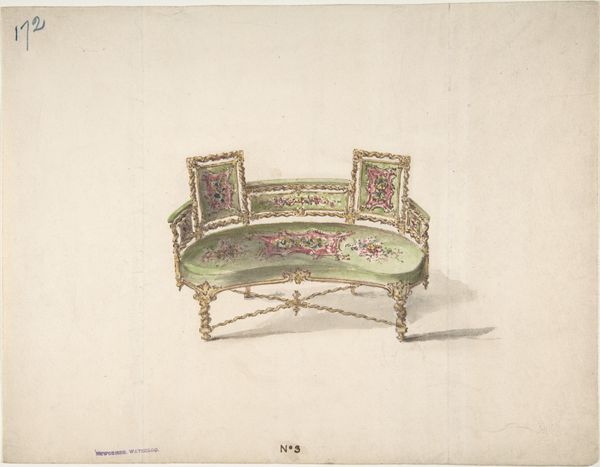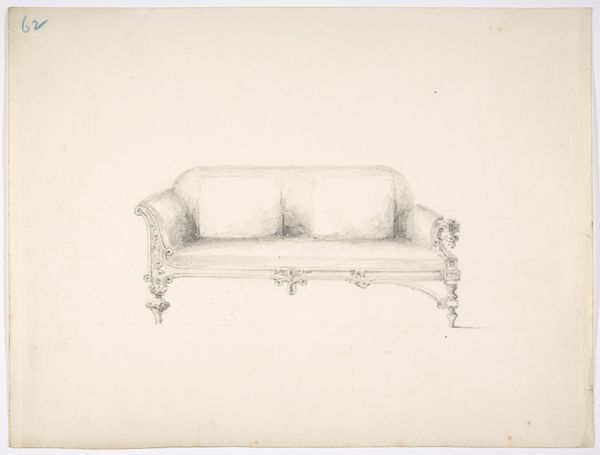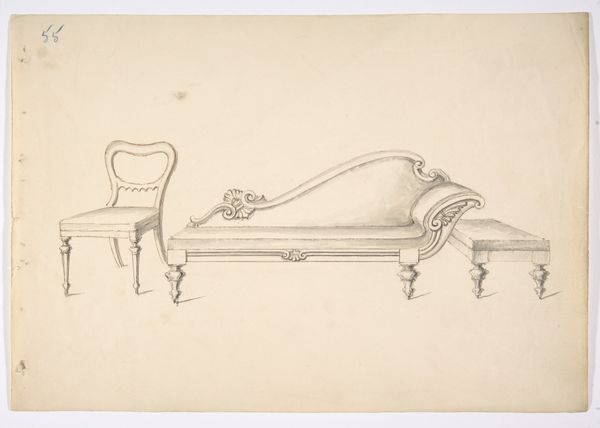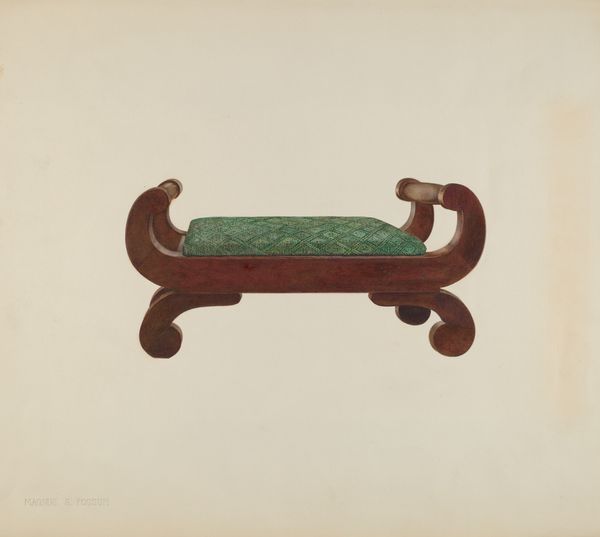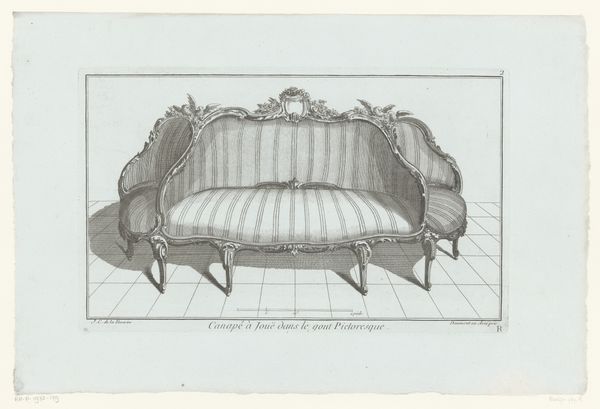
drawing, print, watercolor
#
drawing
# print
#
furniture
#
watercolor
#
romanticism
#
watercolor
Dimensions: sheet: 8 15/16 x 11 13/16 in. (22.7 x 30 cm)
Copyright: Public Domain
Curator: The artwork before us is "Design for Albert Settee," created sometime between 1800 and 1850 by an anonymous hand. It’s a watercolor drawing, and judging by the look of the paper itself, perhaps also a print. The piece now resides here at the Metropolitan Museum of Art. Editor: My immediate impression is of elegance fading into whimsy. The soft greens and golds, coupled with the sheer delicacy of the watercolor, give it a daydream-like quality. It’s as if I’ve stumbled into a very polite fairytale. Curator: I'm intrigued by the designation "Design". This piece wasn't necessarily meant as fine art. Instead, it probably functioned as part of a larger production process, representing an intermediary stage where design meets practical application, blurring lines between art and manufacture. The “Albert Settee” itself becomes secondary to understanding its making and function. Editor: You know, looking at the ornamental details, particularly around the legs and the chair backs, I find myself imagining the artisan’s labor and dedication. You can almost feel their hand meticulously crafting each flourish, not just as a design element but also as a means to infuse even a commonplace item like a settee with beauty and narrative. Curator: Precisely! This design embodies Romanticism. The emphasis on aesthetic sensibility in an object for the upper classes provides clues about status, societal expectation, and a growing appetite for comfort married with visible wealth. Editor: It makes you wonder, doesn’t it, about the people who would have lounged on this settee? What conversations it might have overheard! It almost seems like it whispers secrets of a bygone era. Curator: Exactly; what was their relation to the people who built this chair. Focusing on the artwork, this reveals the societal layers embedded in it, extending beyond the purely visual. This “Albert Settee” drawing asks, who designed this piece, who chose its fabrics and ornamentation, and of course, who toiled to construct and eventually, to maintain it? Editor: In a way, analyzing “Design for Albert Settee” invites me to go beyond its historical and material context and ponder what defines luxury across different centuries and through the various hands it passes through from the initial sketch, to its final iteration in someone's parlor. Curator: And for me, understanding it fully means uncovering the process of its making, shedding light on social context that informs what the end product symbolizes about status, wealth and social structures.
Comments
No comments
Be the first to comment and join the conversation on the ultimate creative platform.
